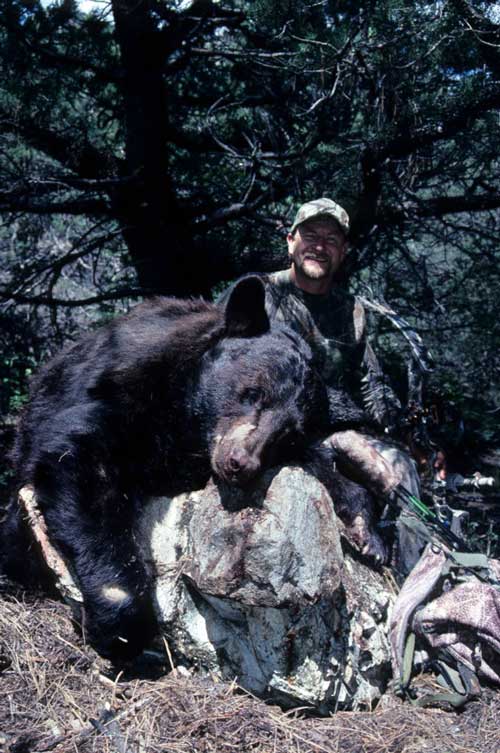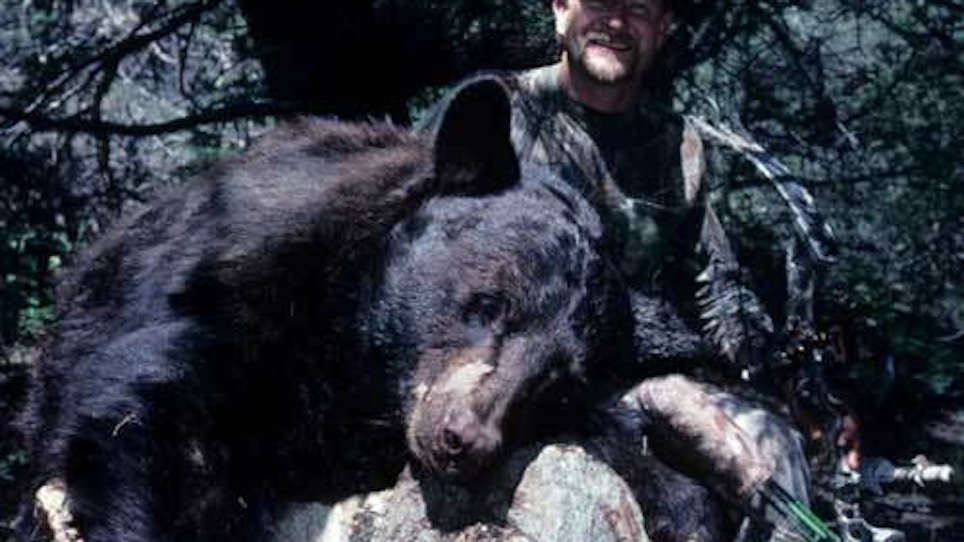 Tagging bears by hounds or bait offers a certain brand of excitement and high-odds success. These methods, however, have become a thing of the past in an increasing number of states. Even where legal, guided hunts including such ploys can be cost-prohibitive. Heavy-handed regulations spawned by anti-hunters, even apathetic hunters who deem such modes unethical, have resulted in exploding bear populations in many areas. This means that despite the restrictive rules, your chances of bagging a bear might actually have improved.
Tagging bears by hounds or bait offers a certain brand of excitement and high-odds success. These methods, however, have become a thing of the past in an increasing number of states. Even where legal, guided hunts including such ploys can be cost-prohibitive. Heavy-handed regulations spawned by anti-hunters, even apathetic hunters who deem such modes unethical, have resulted in exploding bear populations in many areas. This means that despite the restrictive rules, your chances of bagging a bear might actually have improved.
For the do-it-yourselfer bowhunter, this means still-hunting or spot-and-stalk, each dictated by terrain and vegetation type. Still-hunting is best in heavily wooded areas with limited visibility. Bowunters slip slowly and quietly through promising habitat after heeding wind, calculating their approach to unsuspecting bruins. Spot-and-stalk is most viable where visibility is better. Hunters glass promising habitat to seek distant bears. Then they plan a sensible approach route to arrive within bow range.
Both are highly effective approaches.
Bears have a supernatural sense of smell. Their other senses — compared to game such as deer — are poor. Too, because bears are essentially at the top of the food chain, they have less to fear than deer. Therefore, they are more relaxed. This means a bear sensing a foot-fall or slight movement may sometimes react more in curiosity than terror.
Scouting is pivotal to locating hotspots. Bear scat not only tells you bear are in an area, and how many, but what they're eating. Bears live by their stomachs. While still-hunting or stalking follow the food. Bears are always hungry. In spring when bears emerge from hibernation, they are literally starving. In fall, they are fattening up for the long winter. Where there is food, there will be bears.
Foods found in thick areas — like second-growth or creek-bank berry scrub (East), or piñon-nut mesa country (West), as examples — allow slow, patient still-hunting. Terrain inviting spot-and-stalk ploys might include acorn-bearing oak ridges, old forest-fire clearings, clear-cuts, or Southwest juniper berry or desert prickly-pear fruit canyons.
Inspect bear droppings closely to determine what kinds of food bears are hitting. Finding bear sign is seldom difficult. You can cover a lot of ground before the season begin or do it while hunting less methodically until you unlock the season's preferred fare. Afterwards, concentrate your efforts on areas where preferred food is most abundant.
Prevailing weather can provide clues to a particular year's crop. Summers with normal to above-normal precipitation generally create acorn mast, making such areas hotspots. Piñon nuts typically produce on a seven-year cycle, making certain years bear-hunting bonanzas. During a drought when Southwest acorns or high-country berry crops fail, look to lower elevations and juniper berries as bear magnets. Prickly-pear fruit can also be highly productive during dry years. It's counter intuitive, but during dry years foothill habitat often attracts more bears.
Slipping close to a bear, face to face, has to be one of bowhunting's most thrilling experiences. You don't need a guide to make this happen. Invest your time this season, and you can realize your dream of a bear-skin rug by following the food for success.






